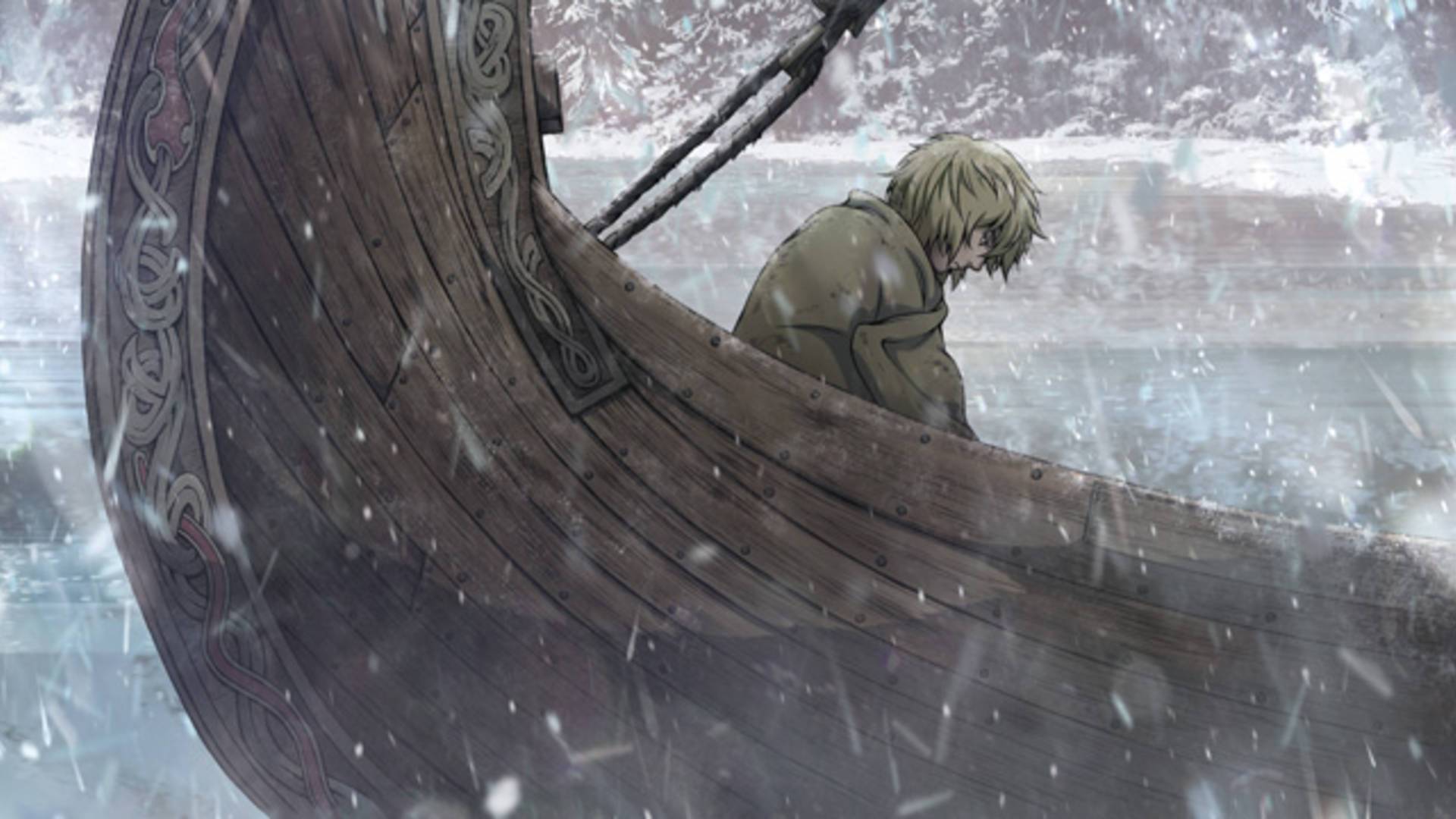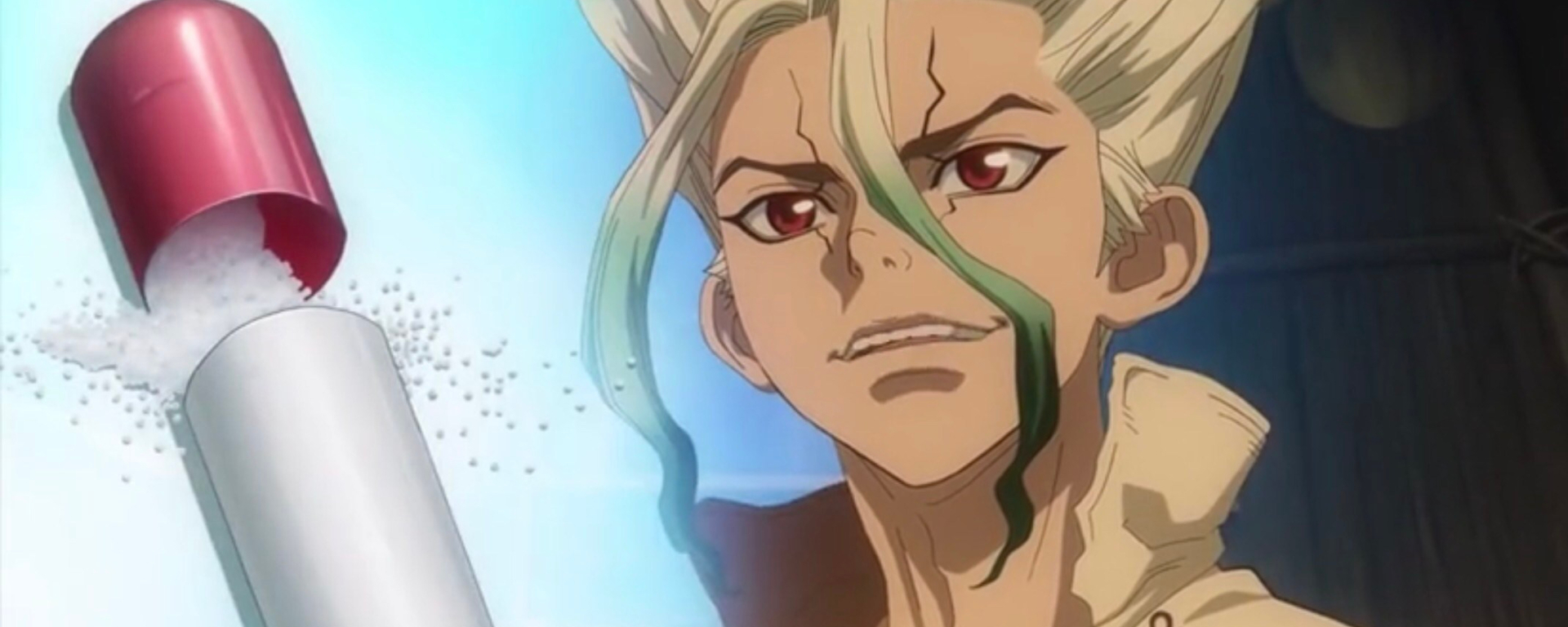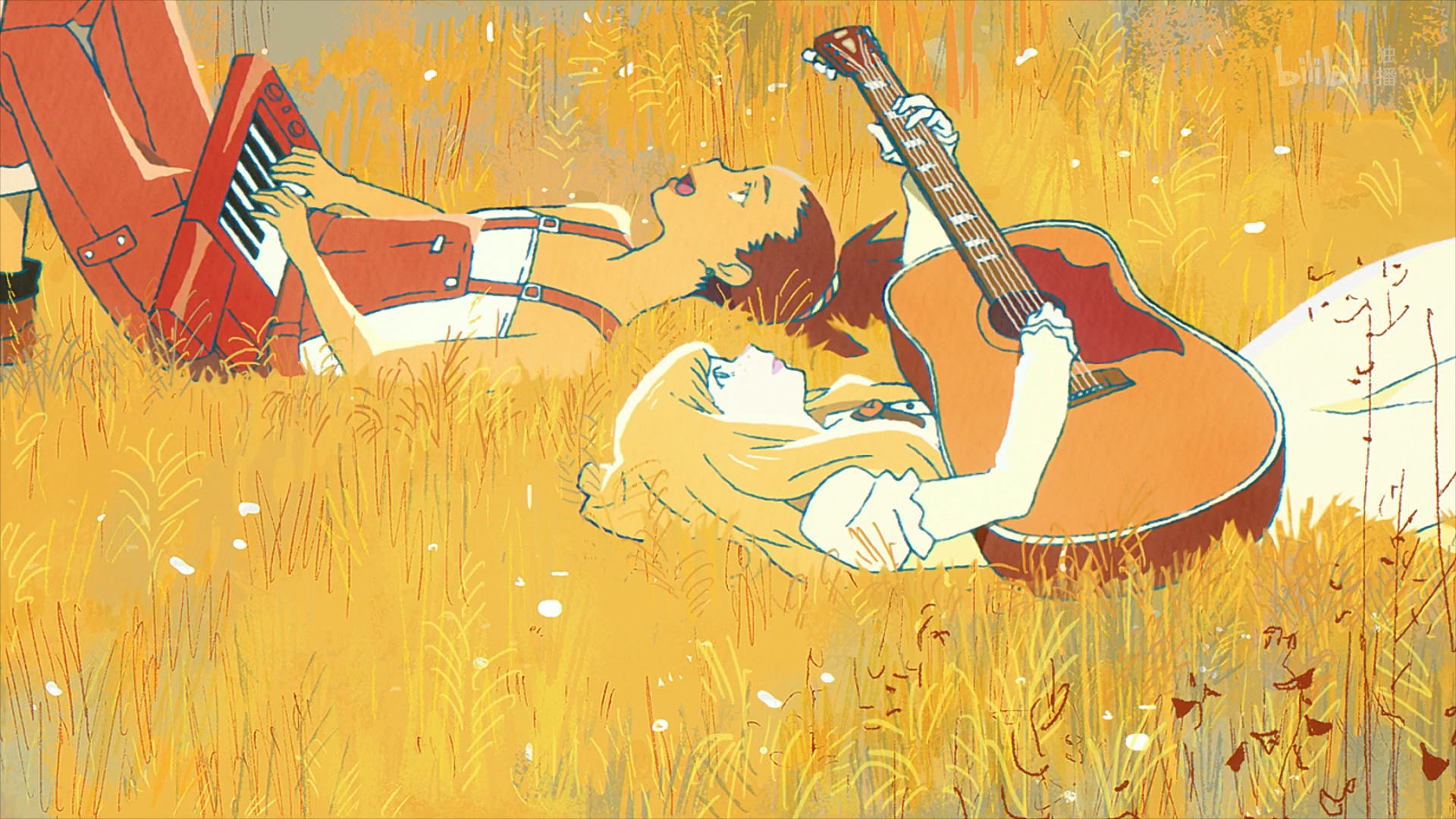
Summer is over and with it the latest batch of Japanese cartoons. While there were a few disappointments, this last few months was mostly defined by excellent shows that managed to improve over the course of their runtime. We had exhilarating adaptations of beloved action manga in Vinland Saga and Demon Slayer, both of which surpassed their genre trappings to deliver humanistic depictions of the battlefield. Dr. Stone, which is also based on a popular manga, has managed to convey the miracles of scientific progress with a sense of wide-eyed awe that is singularly infectious. Carole and Tuesday has picked up steam in its second half, maturing into a confidently told that deftly addresses the music industry and current political moment. And finally, O Maidens in Your Savage season delivered a powerful story of growing pains, love, and the trials of youth.
Demon Slayer: Kimetsu No Yaiba

The world of Demon Slayer can be cruel. Vampiric monsters roam the land, stealing the lives of innocents without recourse. Here, death can come at random, without rhyme or reason. But despite these dismal forces of evil, this story isn’t a nihilistic one. Here hope comes in the form of the series’ protagonist, Tanjiro. Tanjiro happily lives in the mountains with his family, helping collect charcoal for sale. But one night, things go horribly wrong, and after returning from a trip to the village, he is greeted with a grisly sight. His family has been massacred by demons, and the only survivor, his sister Nezuko, is grievously injured. Being infected by demon blood, she soon turns into one of the monsters as well. After convincing a demon slayer to spare his sister’s life, he resolves to join the monster-hunting organization himself, determined to defend others from similar tragedy and to find a cure for his sister.
As Tanjiro sets out on his path of becoming a warrior, he comes into contact with a variety of wretched souls, humans turned monster who have failed to fight against their animalistic urge to feed. But despite all of the violence he witnesses, his resolve is unshaken. He knows that deep down, these people are still human. As Tanjiro fells each new monster, we see glimpses into their lives before they were converted, the pain and suffering they endured, and the horror of their encounter with Muzan, the original demon. Through Tanjiro’s compassion, these demons are able to remember their humanity in their dying moments. While most stories of this type revel in bloodshed, implying that we can’t escape our darkest desires, and urge us to believe that some people are irredeemable, Demon Slayer is a show with compassion for even the most dismal among us.
Oh, and it also excels as an action show. Ufotable has once again outdone themselves, delivering brilliant moments of smooth animation that help the emotional moments soar. Their trademark use of digital effects gives sword blows additional weight, and they manage to blend CGI and traditional animation to give backgrounds additional depth. Many of the demons Tanjiro comes into contact with have unique abilities known as Blood Arts, making the battles tactical affairs where our protagonist must use his head. In particular, Episode 19 is masterful, an incredible display of sakuga that conveys the unbreakable familial love that anchors the entire story. Although its supporting cast may be exceedingly annoying at times, and it takes a little while to completely find its footing, Demon Slayer has the potential to become a modern battle-shonen classic. Its empathetic protagonist, and deeply felt sympathy towards even the most despicable among us is deeply refreshing.
Vinland Saga

Speaking of humanistic stories about violence, Vinland Saga is a vaguely historical epic set in the early 11th century which follows a war between the Danes and English. The story begins in the middle of a battle, as the renowned warrior Thors realizes something. He no longer wishes to fight. Feigning his death, he escapes to Iceland, raising a son and daughter with his wife Helga. But, try as he might, he cannot fully escape the throngs of war. Thor’s son Thorfinn longs to become a warrior like his father. And even worse, a fight is brewing between England and Denmark. Floki, a member of Thors’ old Viking army, comes to intimidate his old comrade into joining. It isn’t long until they are both dragged into the conflict, and despite his father’s wishes, Thorfinn is pulled into this world of bloodshed.
The entire pathos of the series’ can be summed up in Thors’ words to his son after Thorfinn marvels at one of his father’s daggers. Thors asks his son whom he wishes to kill with the weapon, and Thorfinn says he wishes to kill his enemies. Thors grabs his son’s shoulders and states, “You don’t have any enemies. No one has any enemies.” As Thorfinn is pulled further and further into a gruesome war, he struggles with reconciling his father’s words. Vinland Saga is masterful at depicting the after-effects of war, as well as the kinds of people that delightfully carry it out, cataloging a culture that glorifies violence. Even still there is nuance to be found even in its more despicable characters, such as the Viking Askeladd who offers occasional words of wisdom in between the scheming and murder. Wit Studio does a commendable job of bringing this story to life. While the large scale battle scenes have somewhat awkward CGI which diminishes the epic grandeur of these scenes, combat is depicted as a thoroughly bloody and unpleasant affair, conveying the brutal force of swords and axes as they meet their targets. But even once the story has shifted towards an increased number of action scenes, it never loses its thematic footing, offering fresh perspectives on the hellish nature of armed conflict. Although we are only halfway through the first season, it is clear that Vinland Saga has its priorities straight.
Dr. Stone

While it may not be quite as interested in the nuances of people as the other entries on this list, Dr. Stone successfully translates the hype of battle-shonen into the context of chemistry and engineering. Set in a world where the entirety of the human race has suddenly become petrified in stone, one genius high-schooler awakens from his slumber several millennia later. Determined to restore what has been lost, Senku sets out on a journey to return humankind to its previous technological heights. This unique premise sets the stage for a non-stop barrage of scientific discovery, as our brilliant main character blasts through hundreds of years of technological progress at a breakneck pace.
Most of us take for granted the incredible technological feats accomplished by our ancestors, but Dr. Stone revels in the miracles of human ingenuity. With each new rediscovery of previous techniques, Senku pays tribute to the brilliant men and women that came before us, showcasing how these inventions have improved innumerable lives. So far, the series’ greatest strength is its ability to make these discoveries moving, showcasing just how much work it takes to bring these tools to fruition, while also depicting how large an impact these inventions can make on people’s daily lives. In one scene, Senku scolds a tribal “sorcerer”, only to realize he has been painstakingly trying to solve the mysteries of science with brute force, collecting hundreds of different minerals, and combining them to see their effects. Senku’s condescension turns into deep respect, reminding us of how it has taken an absurd amount of sacrifice committed by countless individuals over thousands of years to reach where we are today. The series has even somewhat addressed the counterpoint of scientific discovery, namely the destruction it can bring. The primary antagonist is an anarcho-primitivist who seeks to cull progress to avoid the evils of greedy capitalism and environmental destruction. Although its humor is quite unconvincing in parts, and its protagonist lacks any sort of interesting inner-conflict to drive the story, so far Dr. Stone has successfully conveyed the awe-inspiring nature of scientific discovery.
O Maidens in Your Savage Season

Teen romance is a mainstay of anime storytelling, but Mari Okada’s latest project dives into its messy particulars with a degree of nuance and empathy that separates it from the tropes of its peers. We follow the five female members of a High School literature club, who must each must come to terms with the with their own romantic and sexual identities. Thankfully there is no leering gaze or fan-service to be found here, and instead, we are shown the complexes, personal hang-ups, and unhealthy attitudes that make it hard for these girls to form happy romantic relationships. Each member of this Lit Club offers a unique angle on tumultuous adolescence, their stories weaving together to paint a full picture of coming of age from a woman’s perspective.
Kazusa can be excruciatingly self-conscious, Momoko finds herself in an unsatisfying relationship as she struggles to understand her own feelings, Hongo feels belittled by her lack of experience, Sonezaki must overcome her overriding sense of shame, and Sugawara must contend with childhood trauma. Each of these character’s flaws, misgivings, and blunders feel well-explored, their foibles creating natural conflict. Over its twelve episode run Maidens sheds light on the heroines inner-struggles, depicting the various disasters and triumphs they encounter while trying to make sense of their complicated emotions. Most importantly it all feels genuine, from the platonic love between the girls to the more complicated romantic feelings that they desperately try to make sense of. Growing up is uncomfortable, emotional, and deeply trying, facts that Araburu Kisetsu no Otome-domo yo (O Maidens in Your Savage) portrays with grace and insight.
Carole and Tuesday

Following the rise of two young musicians on a futuristic Mars, Carole and Tuesday is a soulful tale about the unifying power of music. Our plucky protagonists are from very different walks of life, one is the daughter of a wealthy politician, while the other is a refugee from Earth, but their differences pale before the transformative power of their songs. Beginning as two unknowns, the two must climb the scene while they learn and improve their craft. Focusing on the pressures and joys of creating music, the girls come into contact with a whole variety of different creators. Just as much effort is poured into fleshing out each of these side characters as the girls, and we are shown the tremendous pressures of fame, unique worldviews, egomania, and the experiences that drive musicians to create what they create. Also, the music is quite good. Featuring colaboration with artists like Thundercat, Flying Lotus, Allison Wonderland, we get a wide variety of different textures and genres from the various artists that make up this world. And we get to follow as our duo’s lyricism, and song compositions improve, while two blossom into increasingly talented stars.
Although it’s delightful to watch Carole and Tuesday find their sound, one of the show’s most interesting aspects is how politics come crashing into the world of music. Carole’s influential mother Valerie strives to win Mar’s Presidential Election, running on a policy of isolationism and the deportation of immigrants. While this is mostly happening in the background at first, it slowly creeps into the foreground as artists are deported, false flags occur, and rhetoric becomes more hateful. What’s the answer to right-wing populism, and the hatred it often inspires according to this story? Well for one, understanding each other better. And as it turns out, music can be a pretty good way to accomplish that goal. At the time I’m writing this, the season finale has yet to air, but it’s safe to say that the latest by Studio Bones and Shinichiro Watanabe (who serves as chief director here) succeeds both as a musical coming of age story and also as a rousing condemnation of the current political moment.






